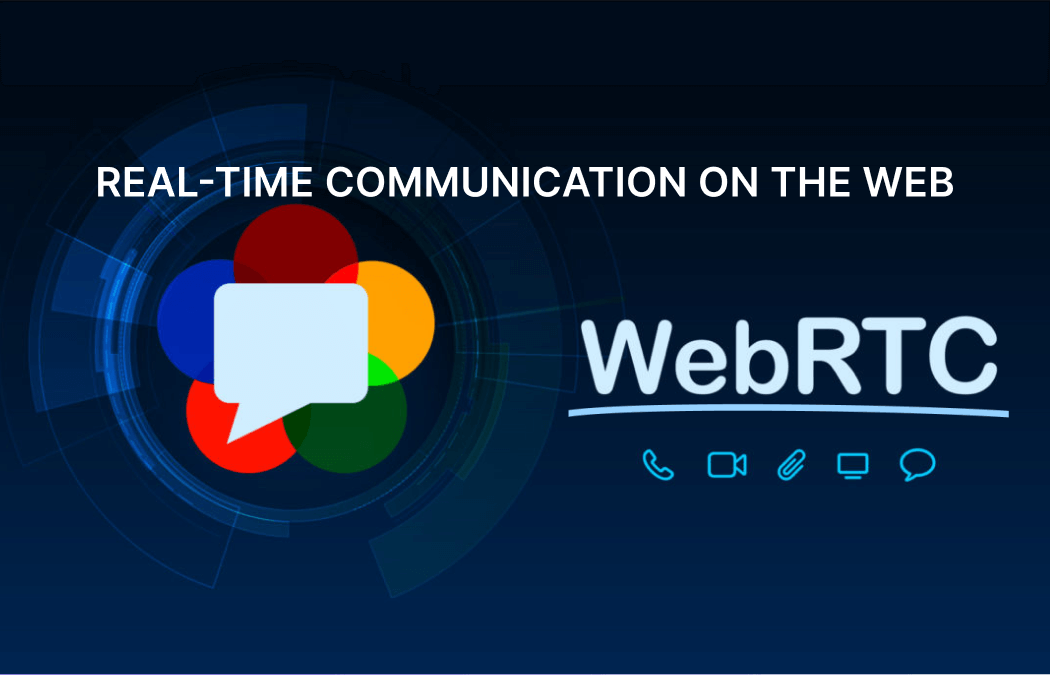Welcome to the second episode of the Blazor and WebRTC (BlazRTC) series! In this blog post, we will dive deeper into the fundamentals of WebRTC. Building upon the foundation laid in the first episode, we will explore the purpose, architecture, and key components of WebRTC, including media streams, peer connections, and data channels. If you haven’t read the first episode, I highly recommend checking it out to get an overview of the BlazRTC series.
In this article
What is WebRTC?
WebRTC (Web Real-Time Communication) is a powerful open-source technology that enables real-time communication between web browsers. It allows developers to integrate voice, video, and data sharing capabilities directly into web applications, eliminating the need for third-party plugins or software installations. WebRTC was developed with the aim of providing a standardized and secure framework for real-time communication on the web. It enables direct peer-to-peer communication between web browsers, eliminating the need for intermediaries or central servers. This technology empowers developers to build applications such as video conferencing, voice calling, file sharing, gaming, and more, all within the browser. WebRTC consists of several interrelated APIs and protocols which work together to achieve this.
WebRTC Architecture
The architecture for WebRTC is designed to facilitate seamless peer-to-peer communication in web browsers. It encompasses essential components and protocols that work together to ensure secure and efficient real-time data transfer.
Media Streams
Media streams are the foundation of WebRTC. They capture audio and video from the user’s device (microphone and camera) and enable real-time transmission between peers. Media streams provide a continuous flow of data that can be processed, encoded, and decoded to ensure smooth audio and video playback.
Peer Connections
Peer connections are a crucial component of the WebRTC specifications. They enable browsers to communicate directly using a peer-to-peer protocol. These connections play a crucial role in ensuring secure communication and facilitating real-time interactions. They various types of communication, such as video, audio, or even exchanging binary data using the RTCDataChannel API.
To establish a connection between peers, they need to exchange information on how to connect. This process is called signaling. It involves both clients providing an ICE Server configuration, which can be a STUN (Session Traversal Utilities for NAT) or a TURN (Traversal Using Relays around NAT) server. The role of these servers is to generate ICE candidates, which are then shared with the remote peer.
ICE candidates contain network information, such as IP addresses and ports, that help peers discover the most optimal route to establish a direct connection. By exchanging ICE candidates through signaling, peers can determine how to connect to each other even when they are behind firewalls or using different network configurations.
Signaling
Signaling is a critical process in WebRTC that allows peers to exchange the information required to establish a connection. It involves sharing metadata like session descriptions, ICE candidates, and other parameters necessary for establishing a direct connection between peers.
While the WebRTC specification provides APIs for communicating with an ICE server, it does not include a built-in signaling mechanism. Instead, developers are free to implement signaling using various techniques, such as WebSocket, HTTP, or third-party signaling servers.
One common approach for implementing signaling is through regular HTTP-based Web APIs, such as REST services or other RPC mechanisms. Web applications can use these APIs to relay the necessary signaling information between peers before initiating the peer connection.
Meanwhile, in upcoming blog posts, we will explore the implementation of signaling using SignalR, a popular real-time communication library for .NET. SignalR simplifies the process of establishing real-time connections between clients and servers, making it an excellent choice for implementing signaling in WebRTC applications.
Data Channels
In addition to audio and video streams, WebRTC also supports data channels. Data channels allow peers to exchange arbitrary data in real-time. They provide a reliable, ordered, and bi-directional channel for sending and receiving application-specific data. Data channels are useful for scenarios such as file transfer, chat applications, and real-time collaboration.
Real-Time Communication with WebRTC
WebRTC enables real-time communication by combining the aforementioned components in a seamless manner. The following steps outline the general flow of a WebRTC-based communication session:
Media Capture
The user grants permission to access their device’s media, such as microphone and camera. WebRTC captures audio and video from the user’s device and prepares them as media streams.
Signaling
The browsers exchange signaling messages to negotiate and establish a peer connection. This involves exchanging session descriptions and ICE candidates to establish a direct communication channel.
Media Transmission
Once the peer connection is established, media streams are transmitted directly between the peers. This allows for real-time audio and video communication without the need for intermediate servers.
Data Exchange
If required, data channels can be created within the peer connection, enabling the exchange of additional data in real-time. This can include chat messages, file transfers, or other application-specific data.
In conclusion, WebRTC is a powerful technology that revolutionizes real-time communication on the web. By facilitating direct peer-to-peer connections between web browsers, it eliminates the need for intermediaries and allows for seamless transmission of media streams and data. In this blog post, we delved into the fundamentals of WebRTC, exploring its purpose, architecture, and key components. We discussed how media streams capture audio and video, while peer connections establish secure communication channels. With WebRTC, developers can build applications like video conferencing, voice calling, and collaborative tools directly within the browser. Understanding the basics of WebRTC empowers developers to leverage its capabilities and create innovative, real-time communication solutions. Stay tuned for future blog posts in the Blazor and WebRTC series, where we will explore practical implementations and showcase the power of this technology in web applications.

